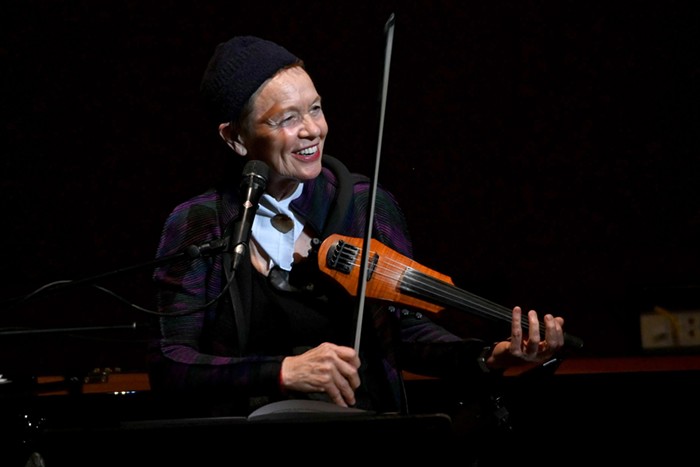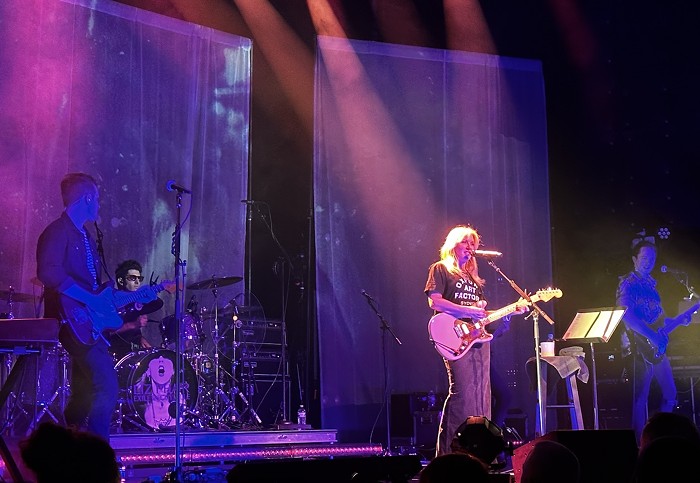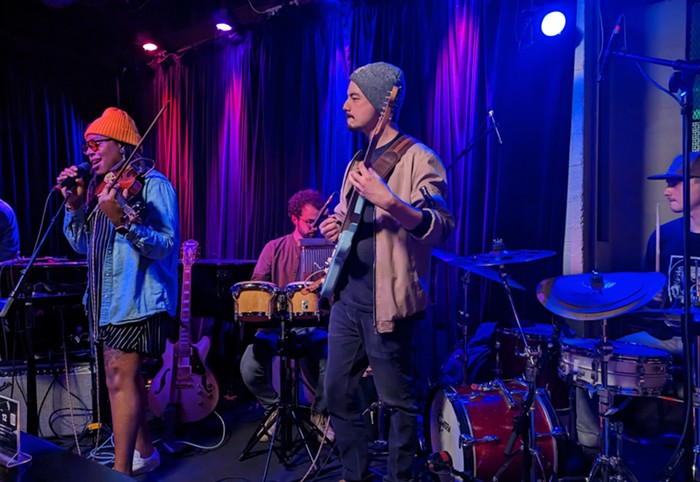SELF-DESCRIBED “exploratory rock” band WL originally composed their latest release to soundtrack René Laloux’s bizarre 1988 animated film Gandahar, a surrealist sci-fi fable about a utopia in perfect harmony with nature that’s suddenly under siege. Its French tag line translates to “The Light Years”—presumably the inspiration for the Portland three-piece’s new album’s title, Light Years.
Misty Mary (vocals/bass/keyboards), Stevie Nistor (drums/keyboards), and Michael Yun (guitar/keyboards) joined forces as WL in 2012, and released their debut full-length, Hold, the following year. On Light Years, WL fleshes out all of Hold’s best moments, like the subtle intensity of its closing track, “You’re Not Really Here.” The resulting seven tracks are stormy, complicated, and strangely beautiful.
While Light Years was initially intended to soundtrack Gandahar, after recording the band decided to partner with local artists and make it a visual album. Each song has an accompanying music video directed by a different artist, but together they’re intended to play as one cohesive film. It’s difficult to simultaneously master two art forms, but there are a few songs where WL’s music and the artist’s visuals are perfectly synchronized and reflective of the other.
“Pink Cloud” is a windswept dirge of intertwined organ melodies propelled by jittery tin can percussion and tempered by Mary’s vocals, which listlessly soar like a seagull riding a breeze. Its visual accompaniment finds her in all white at the water’s edge, her silhouette highlighted in neon red and blue like we’re missing the 3D glasses necessary to see her true form (we probably are—the band’s bio says some videos use “3D point cloud scanning techniques”).
Standout “Crossing” fools you into thinking it’s a Beach House song with its languid drum machine prelude, but quickly morphs into a solemn electro-folk ballad that sounds like Anne Briggs took the red pill. In the video, Mary sits in the front of TriMet’s number 16 bus, turned around in her seat and eerily staring back at the camera, her voice echoing like there are miles between the rows.
At the beginning of Gandahar, the utopia’s rulers use “mirror birds” to see the outer limits of their world and the dangers that might threaten it. “Refraction” seems at least in part inspired by these birds that reflect reality from afar—the song pulses through layers of kaleidoscopic psych, with Mary’s vocals notably more distant, like she herself is a mirror bird singing from Gandahar’s outermost borders. Its visual is dominated by sunlight reflecting on mirrors and glass, making the rainbows and white light it catches look captivatingly preternatural.
Closing track “Trash” is more than seven minutes of kraut-inspired jamming. Mary drones mystifying riddles about the future, singing “We believe we are destined to see a true tomorrow” like she’s sure we won’t. It’s an unsettling, electrifying end to a record that feels like it’s bursting with these sort of cryptic messages, sonically inscribed in an alien code. That’s the odd beauty of Light Years—it sounds both bound to the terrestrial and radioed in from a million light years away.


















